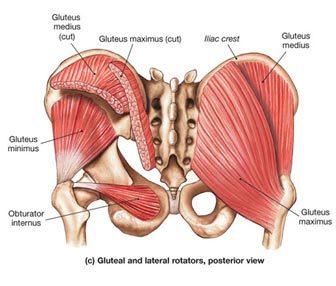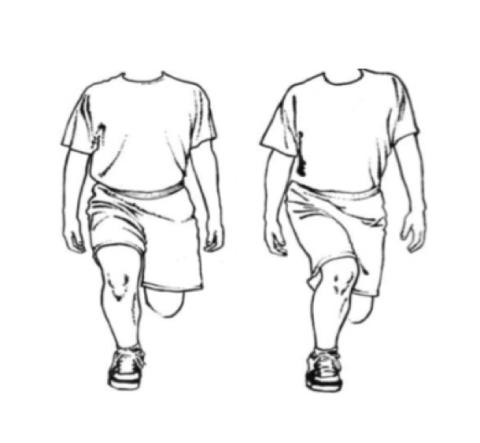The Glutes - a pain in the bum!
17th November 2017 - 19:58
The majority of people who have been to see a physiotherapist with a lower back or lower limb injury, or have had their running gait analysed will probably have been told that their glutes are misbehaving (or sometimes void of behaving in any manner whatsoever, good or bad!). Sound familiar?
#TeamTCUK phyiotherapist and athlete, Sarah Crisp, explains why our glutes are so important and why they can be a real pain in the bum!
"So what's all the fuss about, why are these gluteal muscles so important to us as triathletes?
Let's start with where the glutes are.

The gluteal muscles, or 'glutes' as they are affectionately known, are essentially the group of muscles that form the majority of your bottom. They consist of gluteus maximus, medius and minimus. They are extremely important muscles for controlling movement and stability at the hip, stability of the lower limb, and work in conjunction with spinal and abdominal muscles to provide stability at the pelvis and subsequently lumbar spine (lower back).
In relation to triathlon, they play an important role in generating extension from the hip when we kick during front crawl, they play a pivotal roll powering the downstroke and controlling the alignment of the knee when we pedal, and finally they play a crucial role in driving us forwards and providing stability at the pelvis, and lower limb whilst running.
Weakness in the gluteal muscles can predispose numerous lower limb conditions, particularly in response to frequent cycling and running. Examples of conditions which can be attributed, at least in part, to poor glute function are: ITB syndrome, patello-femoral pain ('runners knee'), recurrent calf/hamstring strains, lower limb tendon problems (such as Achilles tendinopathy), piriformis syndrome, 'shin splints’…the list goes on. This is largely due to the fact that weakness in the gluteal muscles, results in either; a) overload on the musculoskeletal system elsewhere, or b) inadequacies in lower limb alignment (particularly with fatigue), both of which can result in pain/injury.
How do I know if my glutes are weak? You can assess this yourself by watching yourself do a small range single leg squat in the mirror. Two things to check as you squat are; 1. Is you pelvis level? i.e. Is the waistband on your shorts level, or does the non-weight bearing side drop relative to the other? (see picture below) 2. If you imagine a plumb line from the centre of your knee cap to your foot, where would it fall?

Ideally, as you bend your knee, the pelvis should remain level horizontally, and the knee should track in line with the centre of the foot (or 2nd/3rd toe), as shown in the image on the far left. If you notice that one side of your pelvis drops, and/or that your knee is tracking towards/beyond the inside of your big toe (as shown in the other image), then your glutes need some work.
So how do you strengthen your glutes? Although weighted double footed squats are a great way of building power in the lower limb, it's not particularly relevant to us as triathletes. When we run and cycle, we transfer weight/force from one leg to the other, therefore single leg stability type exercises are preferable.
As a TCUK athlete, your coach will include at least a couple of strength and conditioning sessions per week including single leg stability exercises. Variations on single leg squats and lunges, single arm dead lifts and single leg bridges, are examples of great exercises for improving gluteal strength and control. Whilst carrying out these exercises use a mirror to check your alignment as described above. Sometimes, running drills can be useful to try and encourage the gluteal strengthening exercises to carryover to running form.
If you remain unsure of whether your glutes are behaving or not, one to one assessment and treatment sessions, including running gait analysis can be arranged for athletes living in the Sheffield/North Derbyshire vicinity. You can contact me via email at sarah@reactive-physio.co.uk for any further information and appointment bookings."